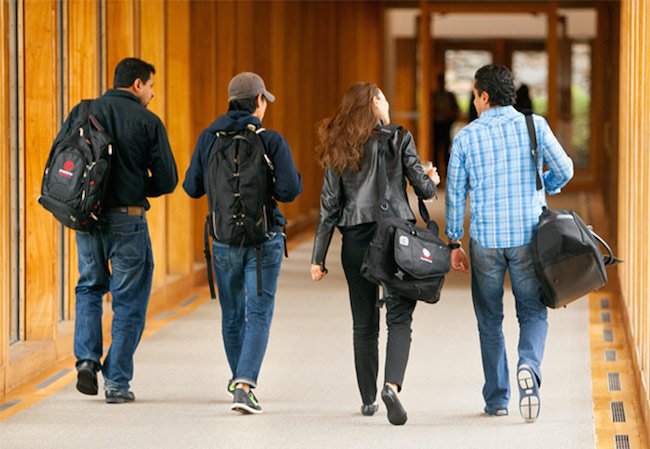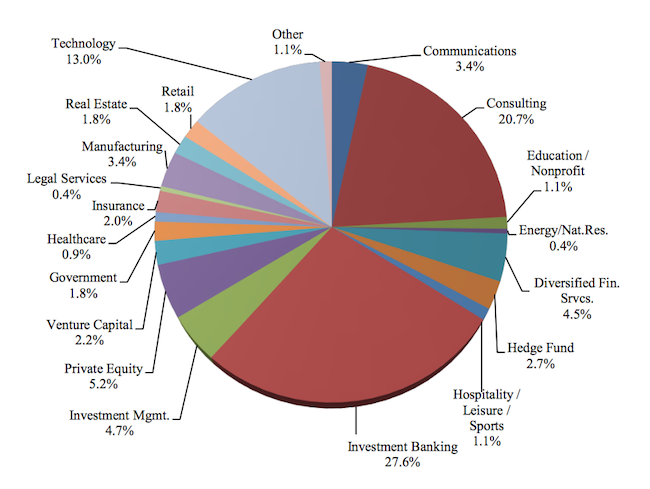Where a business undergraduate ultimately goes to work is often a matter of what school he or she goes to. Everyone knows that geography is often destiny when it comes to jobs. But the choice of a school can often make grads more likely to pursue certain careers.
Georgetown, UPenn, Virginia and Michigan tend to funnel the most grads into the financial services sector. Indiana kills it with the public accounting firms, sending one in four of its graduates into the accounting field. The University of Texas at Austin dispatches a high percentage of grads into technology firms.
And when it comes to geography, you can pretty much expect the location of a school to have a fairly significant impact on where grads land their first jobs. Take a look at the University of Texas in Austin. Seven of every ten grads stay in Texas after graduation, with 36% of the Texas-landed students in Dallas, 34% in Houston, and 27% in Austin. Go to
Emory University’s Goizueta School in Atlanta, Georgia, and there’s a good chance you will either land in the northeast, where 47% of the Class of 2016 ended up, or the south, where 37% of the class gained jobs.
MOST INTERNATIONAL UNDERGRADS APPEAR TO BE LANDING U.S. JOBS
Consider Indiana University’s Kelley School of Business in Bloomington, Indiana. Although Kelley undergraduates in 2016 report accepting employment in 30 states, the District of Columbia, and 5 countries worldwide, the greatest concentration of hires (70% in all)
was in the Midwest. The top states were Illinois (44%), Indiana (15%), New York (10%), Texas (5%), Ohio (3%) and California (2%). The most popular city for Kelley undergrads was Chicago, followed by Indianapolis, New York City, and Austin.
The relatively small percentages of undergrads who gain jobs overseas suggests that most international students are able to land jobs in the U.S. At the University of Virginia’s McIntire School of Commerce, for instance, roughly 15% of the Class of 2016 was composed of international students but only 2% of them accepted jobs outside the U.S. At Indiana Kelley, there were 320 (23%) foreign nationals in the Class of 2016. Of these, 132 (41%) were actively engaged in a job or graduate school search. Of the 132 international students seeking employment, 110 (83%) reported a full-time job or graduate school acceptance this year. Only 2% of the entire class, however, got jobs outside the U.S.
All of this leads to another issue. Very few of the business schools do a good job at reporting the basic pay and employment stats for their undergraduate classes. The most transparent and most timely, by far, are Wharton, Michigan Ross, Indiana Kelley, Minnesota Carlson, Washington Olin, Emory Goizuera, and UVA’s McIntire. In some cases, schools have failed to update their employment stats for several years. Yet, some of these institutions have price tags on their degrees that are high or higher than schools that better inform parents and students about graduate outcomes.
WHARTON’S CLASS OF 2016 INDUSTRY CHOICES IN DETAIL
While the above table shows how schools compare on the most common industries their graduates are entering, a more complete glimpse of where students go can be viewed below from Wharton’s Class of 2016.













Questions about this article? Email us or leave a comment below.